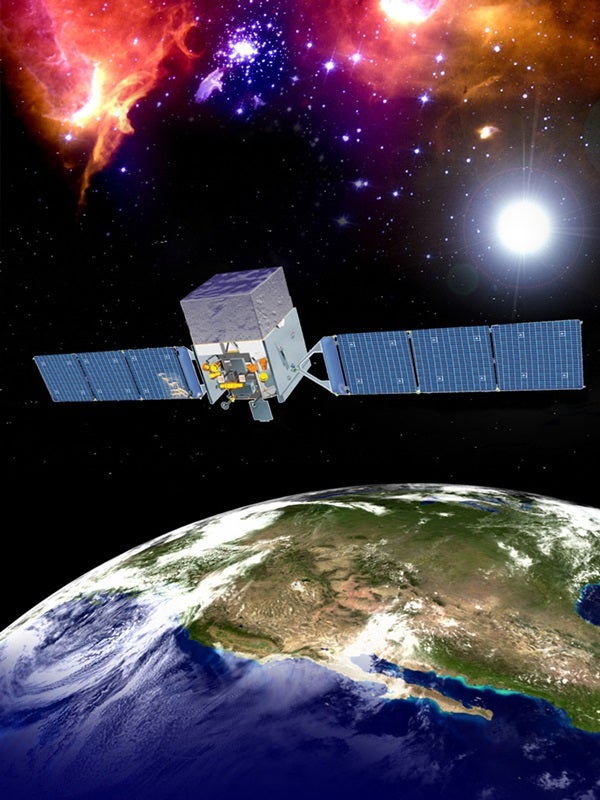Since its launch last June, NASA’s Fermi Gamma-ray Space Telescope has discovered a new class of pulsars, probed gamma-ray bursts, and watched flaring jets in galaxies billions of light-years away. At the American Physical Society meeting May 4 in Denver, Fermi scientists revealed new details about high-energy particles implicated in a nearby cosmic mystery.
“Fermi’s Large Area Telescope is a state-of-the-art gamma-ray detector, but it’s also a terrific tool for investigating the high-energy electrons in cosmic rays,” said Alexander Moiseev, an astrophysicist at NASA’s Goddard Space Flight Center in Greenbelt, Maryland.
Cosmic rays are hyperfast electrons, positrons, and atomic nuclei moving at nearly the speed of light. Astronomers believe the highest-energy cosmic rays arise from exotic places within our galaxy, such as the wreckage of exploded stars.
Fermi’s Large Area Telescope (LAT) is exquisitely sensitive to electrons and their antimatter counterparts, positrons. Looking at the energies of 4.5 million high-energy particles that struck the detector between August 4, 2008, and January 31, 2009, the LAT team found evidence that both supplements and refutes other recent findings.
Compared to the number of cosmic rays at lower energies, there were more particles striking the LAT with energies greater than 100 billion electron volts than expected based on previous experiments and traditional models. Visible light has energies between 2 and 3 electron volts. The observation has implications similar to complementary measurements from the European satellite named PAMELA – Payload for Antimatter Matter Exploration and Light-nuclei Astrophysics – and from the ground-based High Energy Stereoscopic System (HESS), an array of telescopes located in Namibia that sees flashes of light as cosmic rays strike the upper atmosphere.
Last fall, a balloon-borne experiment named ATIC – Advanced Thin Ionization Calorimeter – captured evidence for a dramatic spike in the number of cosmic rays at energies around 500 gigaelectron volts (GeV). “Fermi would have seen this sharp feature if it was really there, but it didn’t,” said Luca Latronico from the National Institute of Nuclear Physics (INFN) in Pisa, Italy. “With the LAT’s superior resolution and more than 100 times the number of electrons collected by balloon-borne experiments, we are seeing these cosmic rays with unprecedented accuracy.”
Unlike gamma rays, which travel from their sources in straight lines, cosmic rays wend their way around the galaxy. They can ricochet off galactic gas atoms or become whipped up and redirected by magnetic fields. These events randomize the particle paths and make it difficult to tell where the cosmic rays originated. In fact, determining cosmic-ray sources is one of Fermi’s key goals.
What’s most exciting about the Fermi, PAMELA, and HESS data is that they may imply the presence of a nearby object that’s beaming cosmic rays our way. “If these particles were emitted far away, they’d have lost a lot of their energy by the time they reached us,” said Luca Baldini, Fermi collaborator at INFN.
If a nearby source is sending electrons and positrons toward us, the likely culprit is a pulsar – the crushed, fast-spinning leftover of an exploded star. A more exotic possibility is on the table, too. The particles could arise from the annihilation of hypothetical particles that make up dark matter. This mysterious substance neither produces nor impedes light and reveals itself only by its gravitational effects.
“Fermi’s next step is to look for changes in the cosmic-ray electron flux in different parts of the sky,” Latronico said. “If there is a nearby source, that search will help us unravel where to begin looking for it.”










